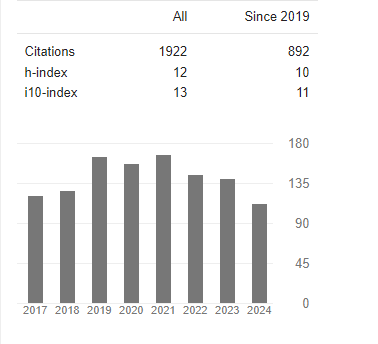Assessment of Factors Affecting Practice Towards HIV/AIDS Among In-School Youth in the West Guji Zone, South Ethiopia, 2021
Abstract
Shiferaw Gelchu Adola
Back Ground: Human immune deficiency virus was a worldwide pandemic, yet there is no proven medicine and vaccine to cure or prevent it. Prevention is only the mainstay to control the spread of the virus. Thus, continuously assessing factors affecting prevention practice towards HIV among young populations is relevant.
Methods: This cross sectional study design was conducted from December 01/2020 To January 01/2021. The multistage sampling technique was used and a total of 615 participants were enrolled. Epi-Data version 4.4.3.1 for data entry and SPSS Version 25 for analysis was used in this study. Descriptive statistics; frequency, percent and inferential statistics were needed. Statically significance cut point settled at p < 0.05 with 95% confidence intervals.
Results: Out of the 615 participants, 586 were completed the questionnaires in which 95.3% of respondents rate. The overall scores of poor knowledge, unfavorable attitude, and unsafe practice in the current study were 25.1%, 27.5%, and 24.2%. Of all study subjects; 38.7% were undifferentiated HIV from AIDS and 20.1% of them were wrongly reported as HIV/AIDS was a curable disease. Slightly more than half 51.5%, 28.2%, and 19.3% of the respondents were misbelieved that HIV transmitted by mosquito bit, eating food cooked by HIV positive person, and handshaking respectively. Early practice sexual activity at age < 15 years old was reported by 70(50.4%) and mean age for the first sex was (15.68 + 2.13SD). Females were 71.6% time more likely protect AOR = 0.284, 95% CI = 0.18-0.43), Age group 15-19 (AOR = 4.69, 95%CI =2.33-9.42), singles in marital status (AOR= 7.03, 95%CI =3.19-15.52), Visiting sexual related video (AOR= 0.202, 95CI = 0.11-0.38) and sharing sharp (AOR= 0.089, 95%CI = 0.04-1.21) were factors significantly associated.
Conclusion: Misbelieve regarding ways of HIV transmission, level of knowledge, and practice gap were identified in this study. Being male, age group 15-19, single, visiting sexual related video, and sharing sharp materials were factors affecting practices towards HIV. As a result, continuous age-appropriate youth-friendly health services emphasized HIV risk behavior reduction should be given to the youth. In addition, all stakeholders including health care institutions, education institutions, and mass-medias give strong concern to alleviate misconceptions around HIV/AIDS.



